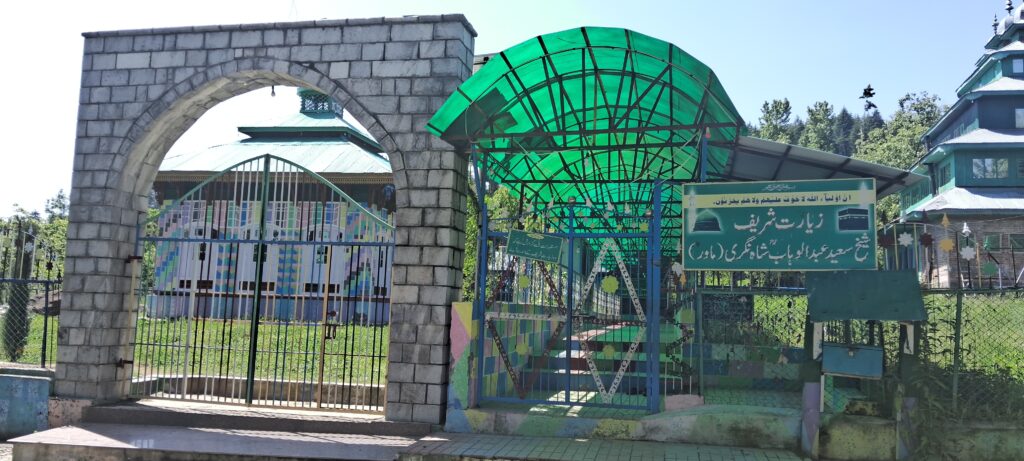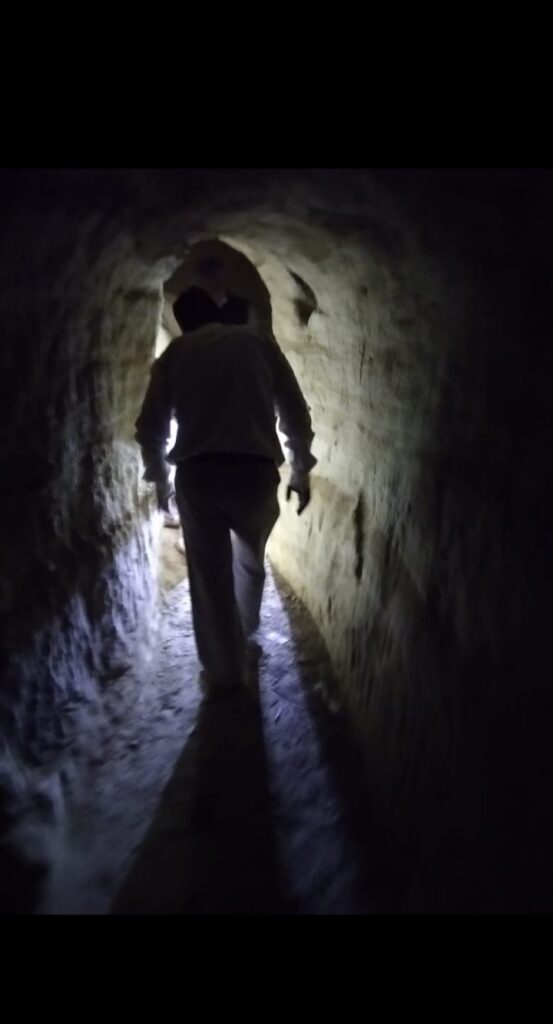Mysteries Surrounding Shahnagri’s Ancient Underground Khankah
By Khursheed Dar
Shahnagri, a village nestled within the picturesque Kupwara district, is renowned not only for the revered shrine of HazratShiekh Syed Abdul Wahab (RA) but also for housing the first underground cave-khankah in the region of Kashmir. Journey Through History
The origins of this historically and spiritually significant underground cave-khankah remain shrouded in mystery, yet various conjectures surround its creation. Local inhabitants unanimously agree that this remarkable testament to Kashmir‘s past and spirituality dates back 700 years. Situated amidst the verdant coniferous forests of Shahnagari, a name that translates to “city of kings” in the local Kashmiri language, this village falls within the jurisdiction of Qalamabad in Kupwara district, Jammu and Kashmir.

The appellation “Shahnagari” was bestowed upon the village by Hazrat Shiekh Syed Abdul Wahab upon his settlement there, symbolizing the triumph of faith. The holy shrine of Hazrat Shiekh Syed Wahab, which shares a devotional connection with Hazrat Abdul Qadir Jeelani, is enveloped by a majestic forest of thousands of Devdaar trees. The enigmatic underground Khankah adds a spiritual aura to the mountain of Shahnagri.
Local inhabitants unanimously agree that this remarkable testament of Kashmir’s past and spirituality dates back 700 years. The significance of this spiritual mountain of Shahnagri extends beyond its connection to the Jhelum River, which serves as the bedrock of the Jhelum Civilization, originating from the Verinag Spring
For those seeking respite in the awe-inspiring beauty of cascading cool springs, melodious murmuring waters, and lofty waterfalls, there is scarcely a more enchanting locale within the valley. Serving as the valley’s capital, Shahnagri stands as a testament to the endurance of the shrine of Hazrat Sheikh Sayed Abdul Wahab over the centuries. Mere a hundred meters away from this hallowed shrine lies the underground cave-khankah, a marvel that has silently witnessed 700 years of history. The cave, measuring approximately 30 feet in length, 2.5 feet in width, and standing at a height of 6 feet, bears distinct characteristics in its internal structure and construction, signifying its use by the dervishes for meditation and chilla practices. Adjacent to the cave, a spring once flowed, though it has now regrettably dried up. Despite the cave’s deteriorating condition, remnants of a corridor and seven peculiar rooms can still be discerned. Upon entering the cave, two small rooms greet visitors, one on the left and another on the right, with the final portion of the cave descending further below ground level.

It is worth highlighting the archival evidence supporting the existence of this underground khankah since the mid-13th century, attracting visits from revered Awaliyas such as HztBulbulshah RA and Hzt Amir Kabir RA, along with various Sufi Aitqaadsilsilas. The period spanning from HztBulbulshah RA’s presence in 1321 to the era of Mir Syed Ali Hamdani RA in 1370 AD marked a golden age of love and brotherhood. This khankah stands witness to a remarkable history of profound love and advanced civilization, although its current state is disheartening. Last year, a research team led by the present author discovered this underground cave-khankah.
Believed to be 700 years old, the arrival of Hazrat Bulbul Shah (RA), a renowned Sufi saint of the highest spiritual order, marked an era of cave meditation in Kashmir from 1321 to 1371 AD. Indigenous Sufi saints of Kashmir, including HazratShiekhNoorud Din Wali, HazratZainud Din Wali (RA), Hazrat Baba Shakoor ud Din (RA), and many others, were known to have engaged in meditation within these caves while reciting the 99 names of Allah and the Prophet (SAW).
The significance of this spiritual mountain of Shahnagri extends beyond its connection to the Jehlum River, which serves as the bedrock of the Jehlum Civilization, originating from the Verinag Spring. The springs within this khankah enrich the Jehlum through Mawar Nallah, one of its main tributaries. It was on the shores of this river that HazratBulbulshah, Amir Kabir, NaamatullahQadiri, along with hundreds of Muslim and Pandit saints, preached love and unity.

Regrettably, this unique spiritual marvel is now crumbling, with its outer portion suffering significant damage from snow and rain. The caretakers of the holy shrine of Shiekh Syed Abdul Wahab are diligently working to preserve this 700-year-old historic and spiritual wonder. The recent reopening of the underground cave-khankah serves as a poignant reminder of the profound harmony deeply ingrained in Kashmiri civilization.
The views expressed in this article are solely those of the author and do not necessarily reflect the opinions or views of this Magazine. The author can be reached at [email protected]

Leave a Reply